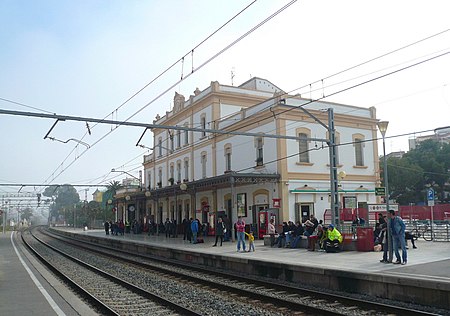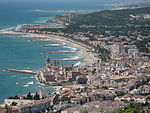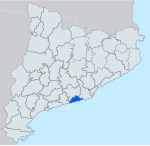Sitges railway station
Buildings and structures in the Province of BarcelonaCatalan railway station stubsRailway stations in CataloniaRailway stations in Spain opened in 1881Rodalies de Catalunya stations ... and 2 more
SitgesTransport in Garraf

Sitges is a Rodalies de Catalunya railway station serving Sitges, in Catalonia, Spain. It is served by Barcelona commuter rail service line R2 Sud as well as some trains on regional lines R13, R14 and R15. The station has three platforms: platform 1 is the location of the main ticket office and waiting room as well as the entrance and exit to the station. Platforms 2 and 3 form an island platform which are accessed by an underground subway from platform 1. Coming from Barcelona the preceding station is Garraf and the following station is Vilanova i la Geltrú.
Excerpt from the Wikipedia article Sitges railway station (License: CC BY-SA 3.0, Authors, Images).Sitges railway station
Carrer de Salvador Mirabent Paretas,
Geographical coordinates (GPS) Address Nearby Places Show on map
Geographical coordinates (GPS)
| Latitude | Longitude |
|---|---|
| N 41.239075 ° | E 1.8096722222222 ° |
Address
Via 2
Carrer de Salvador Mirabent Paretas
08870
Catalonia, Spain
Open on Google Maps








